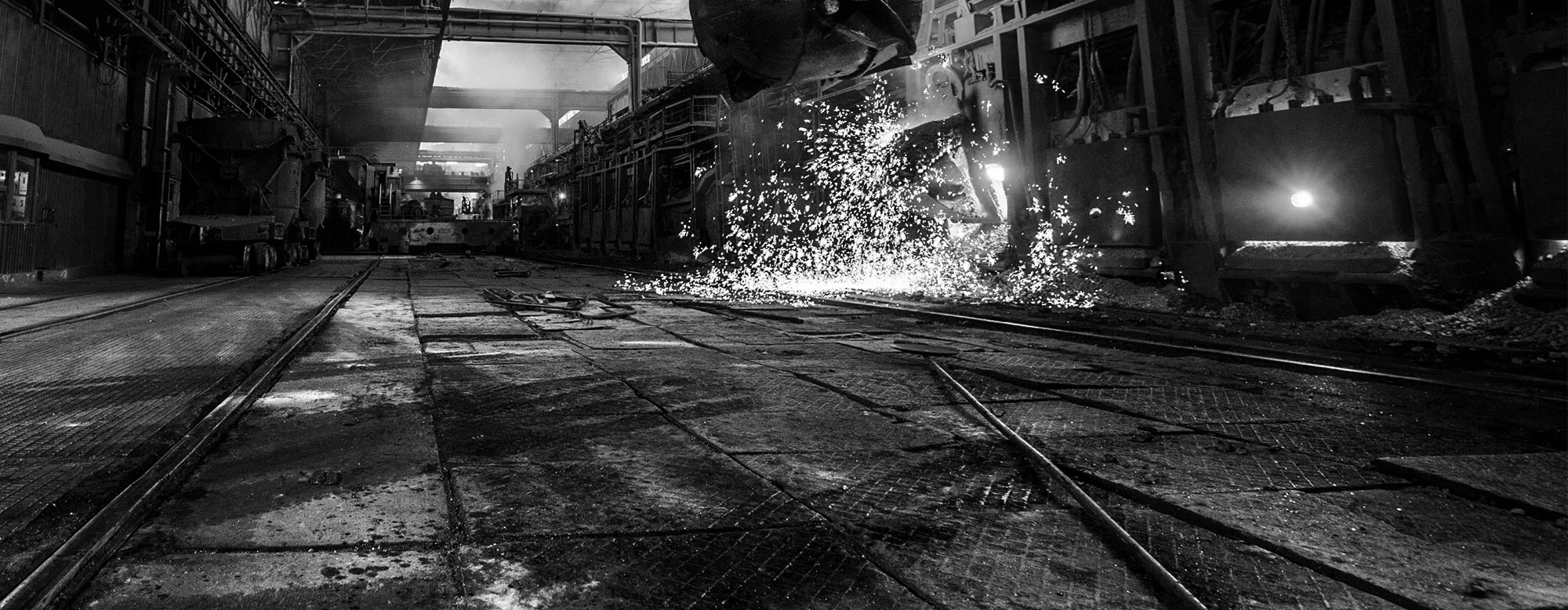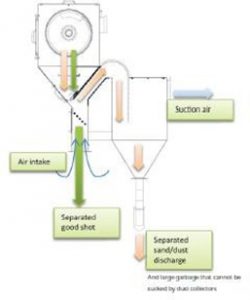WE-3 Air-Wash Separator
Introduction
With the invention, introduction and now widespread use of centrifugal wheel-blast and air-blast equipment, the blast cleaning industry has struggled with the control of the operating mix inside of blast machine according to abrasive supplier recommendations to maintain optimal performance and shorter cycle times.
The operating mix (or work mix) should be free of sand and scale which increases part wear in foundry and forging applications, free of dust and debris which increases backside contamination in rebar and pipe coating applications, and increases operational costs due to higher maintenance in all applications.
The horizontal cross-flow air-wash separator designed and developed by Tilghman, Wheelabrator & Wheelabrator Frye Corp’s have been the industry standard since the use of centrifugal wheel-blast equipment was introduced. The standard air-wash separator is typically used in mechanical reclaim operations where heavy steel abrasive is used.


While the standard design has remained the same, various companies have updated designs including multiple-lipped separators and actuating metering gate/baffle designs. These types are also in use today. See below photos for reference.


Particularly in foundry applications, the use of magnetic separators to improve the effectiveness of the air-wash separator has gained in popularity although at great capital expense to the end user. This mechanical means of separation is used with steel abrasives and any non-metallic particles will be more effectively discarded by means of magnetic separation. The overriding problem is now using mechanical equipment in a highly adverse environment, ie. Sand and steel abrasive, moving parts and airflow (or lack thereof). Magnetic separators require maintenance to remain effective and this comes at an additional expense to the capital cost of $50 – $100K USD plus installation. See below photo for reference:

The Sinto WE-3 Air-Wash separator can clean as effectively as a magnetic separator without mechanical magnetic separation and with no moving parts. The abrasive operating mix is cleaned entirely with air. Vertical air-flow of up to 2800 FPM vs. traditional horizontal flows of 200 – 350 FPM and a cleaning envelope of over 12” depending on size capacity vs. 3-4” are only two of the differences. This is also accomplished with no additional dust collector CFM requirement vs. traditional air-wash separators.


Test Method & Data
In the Sinto Surface Treatment Technical Center and Laboratory, Sinto personnel added S-460 cast steel shot and sand into a CNDR-22 drum blast machine that utilizes the new WE-3 air-wash separator. By running the reclaim system, the sand and shot mix cycled through the entire system passing through the WE-3 as in a typical shot blast system. Sand separation achieved was 99.3% – 99.7% for typical foundry sand size distribution. For larger sand 1.5mm to 2.3mm, the separation efficiency was lower in the 95% – 96.8% range.

The results indicate high (>98% separation efficiency) at sand loads of 9% of part weight.

Conclusion
The Sinto SST WE-3 air-wash separator can effectively clean an operating mix to a 99.9% – 99.7% level of metallic vs. non-metallic particles using only air with no moving parts. Magnetic separators from other manufacturers are not promoted with this specific data; they are promoted only by stating, “reduce your maintenance and operational costs.” Magnetic separators will do this, but the Sinto WE-3 separator will do this for less capital expenditure and drastically less in operating costs.
Contact Sinto for more information on the WE-3 separator.
Want to know more about Sinto’s WE-3 Air Separator?

